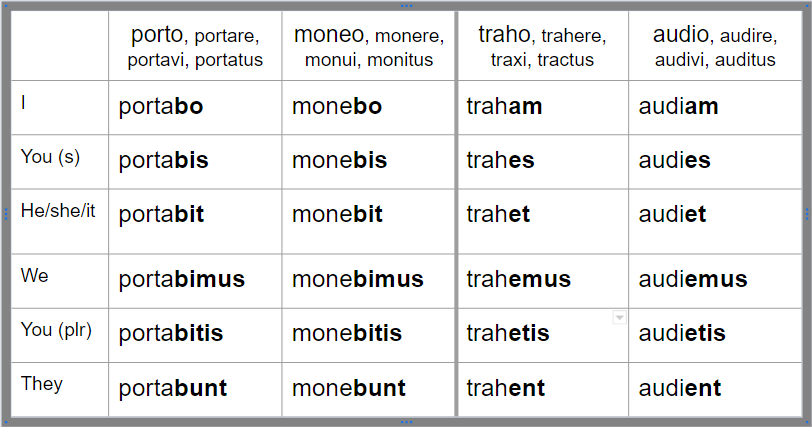Why are there 2 future tense endings in Latin?
January Latin Challenge: Day 11 of 31
Hi everyone, and welcome back to the January Latin Challenge on bambasbat! Today is day 11 of the Challenge, and I am going to explain why Latin has 2 separate endings for the future tense.
Don’t forget that for a complete list of all verb endings, you can download my free reference guide to Latin Verbs here.
Now, you might be thinking “why on earth do my lists all have two sets of example verbs for the future tense?”, or “why aren’t all the future tense endings just -bo -bis -bit?” This is because of an important part of verb grammar called conjugations.
Many romance languages have verb conjugations, like French or Spanish. A conjugation is just the name for a group of verbs that all behave in a similar way. Latin has 4 (and a bit).
The conjugations don’t really matter all that much to begin with, but when you start changing tenses it is really helpful to know which conjugation each one is in. This is because the thematic vowel for conjugations is different, and conjugations also affect how verb stems change in the perfect and pluperfect tenses.
However, to get back to the gist of today’s post, Latin has 2 future tenses, and the difference is just which conjugation the verbs are in.
Here is a table of the future tense in all 4 conjugations:
My 1st conjugation verb is porto, portare, portavi, portatus.
Top Tip: I like to always encourage people to learn the principle parts of verbs as early as possible, as they are so useful for figuring out conjugations and stem changes. It seems like a lot of work to start with but it gets easier the more you practice, and you will see a huge improvement very quickly.
So my 1st conjugation verb goes to portabo, portabis in the future tense. These are the endings most people know really well.
It’s the same for the 2nd conjugation, moneo, monere, monui, monitus. This changes to monebo etc in the future tense.
However, this is where it changes.
We have traho, trahere, traxi, tractus as my 3rd conjugation verb. This goes to traham, trahes in the future tense!
And my 4th conjugation, audio, audire, audivi, auditus matches this one: audiam, audies, audiet…
These are the endings that most people I teach struggle with. They often mistake them for present tense verbs, and then make errors in translation. That’s why it’s really important to try to remember this mnemonic that I have found really useful:
In the 1st and 2nd, the future’s B. For 3rd and 4th, it’s always e.
Actually, I used this for years until one person wanted to add a caveat to this, as they said this didn’t include traham, or audiam. So now my mnemonic is:
1st and 2nd, Future -b-. 3rd and 4th, always -e- [except in the 1st person]
It doesn’t flow as well, but it is more accurate.
Anyway, pick one of them, and repeat this over and over until you are sick of it. It will really help you to remember how the different conjugations affect the endings for the future tense.
So that’s why there are 2 sets of Future tense endings in Latin. The 3rd and 4th are important, so don’t let people tell you you can get away with just knowing -bo -bis -bit!
Don’t forget, as we delve into verbs in the January Latin Challenge, you can download the complete guide to Latin verbs here to help you.
I hope you have found this useful, and I’ll see you tomorrow for Day 12 of the January Latin Challenge on bambasbat!


